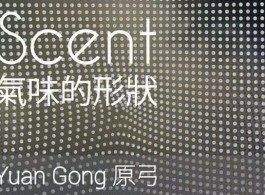Tang Contemporary Art is proud to present Yuan Gong’s solo exhibition “The Shape of Scent” from August 4th to August 27th, 2016 at their Hong Kong gallery. The exhibition features the artist’s video work Close to Heaven and new paintings from The Shape of Scent series.
Yuan Gong’s artistic approach involves a wide range of media including performance, installation, and painting; where ‘intervention’ is the common thread in his works, ‘scent’ is how he intervenes to engage with communities, issues, and sites. Since Yuan Gong’s 2011 exhibition of work The Scent of Air at the Venice Biennale, he has been using installations of mist to ‘invade’ landmarks around the world.
Close to Heaven is a video documenting Yuan Gong’s performance work in 2012, a continuation of his work The Scent of Air where he created a mist installation to ‘occupy’ the Copenhagen Art Festival. The video captures the interaction between audience and mist, demonstrating spatial relationships involved in performance art.
Yuan Gong’s new paintings from The Shape of Scent series evolved from his performance work in Venice – Air Strikes Around the World, 2015. New paintings are rendered using detailed images enlarged from the site of the performance where he had strung together small circles as particles of mist. The process deconstructs, rearranges, and reconstructs the shape of mist, suggesting a hidden order in its intangible nature.
The video works and paintings in this exhibition expand the notions of ‘event and performance’ to ‘consumption and production’; his artistic procedure links incidence, performance, consumption and capitalism together to transform his artwork into a commodity.
As art critic Lu Mingjun quoted in his article [When paintings become performances, or when incidents become commodities] – “On one hand, Yuan Gong attempts to create friction between the individual, history, and reality, by challenging the current system with provocative events that articulate statements of political disobedience; on the other hand, he makes use of the system with intention to ‘cater’ to a bourgeoisie taste in art, attempting to define a new pop art. This kind of division and juxtaposition is thus a reflection of Yuan Gong’s experience in the current system of contemporary art – as he has said, while he has no objection to the market, he also has no attitude towards it.”
About Yuan Gong
Yuan Gong is a contemporary Chinese artist born in Shanghai in 1961. He obtained his PhD degree in the Theory of Art at the Chinese National Academy of Art in 2012, but has involved himself in various aspects of contemporary Chinese art since the 1990s. Both a creator and researcher, designer and planner, Yuan Gong is a multifaceted artist playing at the interface of conceptual, performance, and fine art. Working with a large variety of mediums, his works address a number of philosophical questions – reflecting his concerns for Chinese society and impugning the art system, including the exhibition format and the status of the artwork.
In recent years he has participated in major exhibitions including China8 at the Muelheim Art Museum, Belle Haleine – The Scent of Art at Museum Tinguely, Secret Signs at the Deichtorhallen Museum, Voice of the Unseen – a collateral event at the 55th Venice Biennale, the China Pavilion exhibition at the 54th Venice Biennale, the Copenhagen Art Festival, the 6th Prague Contemporary Art Festival, and the inaugural Beijing 798 Biennale. His artworks have been collected by the Guangdong Museum of Art, the Hubei Museum of Art, the Arthur Sackler Museum of Peking University, the White Rabbit Collection, and the Sigg Collection of Switzerland.



